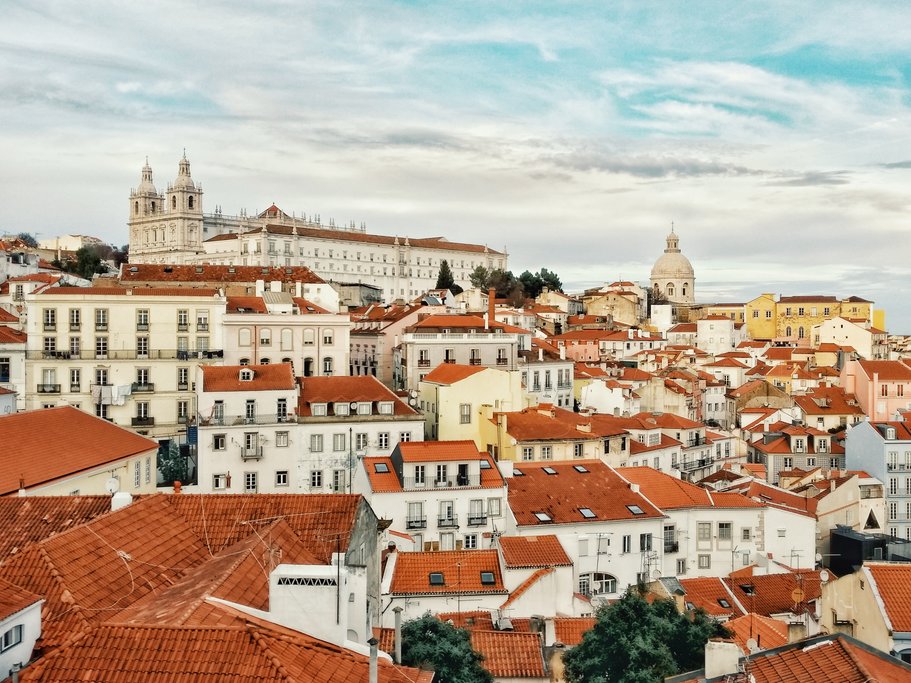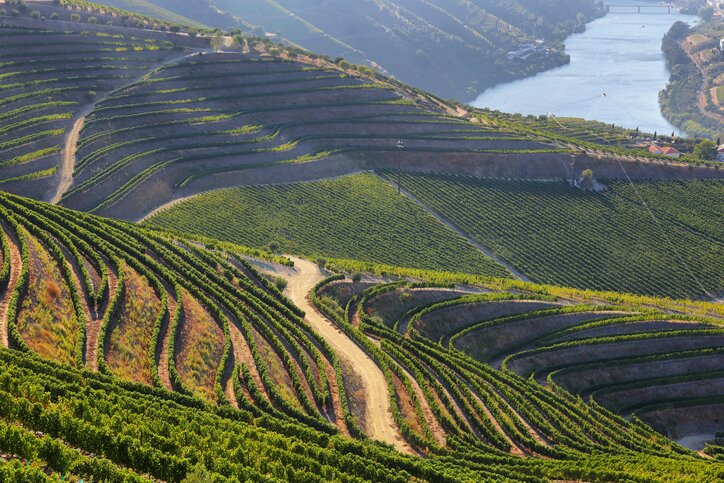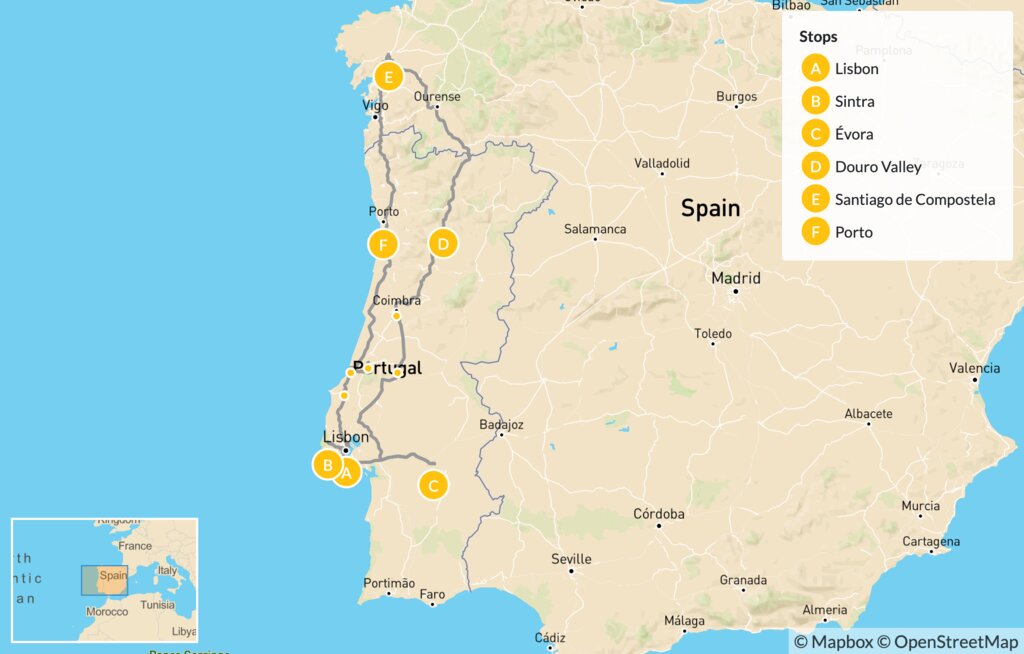Highlights
- Travel at your own speed with a self-drive adventure
- See the major cities of Lisbon and Porto
- Visit the historic cities of Coimbra, Guimarães, Braga, Évora, and Tomar
- Take a pilgrimage to Spain's Santiago de Compostela
- Go wine tasting in the Douro Valley
Brief Itinerary
| Day | Highlights | Overnight |
|---|---|---|
| Day 1 | Arrive in Lisbon | Lisbon |
| Day 2 | Full-Day Tour of Lisbon, Fado Dinner | Lisbon |
| Day 3 | Experience Cascais & Sintra | Sintra |
| Day 4 | Visit Évora, Monsaraz Village & Prehistoric Sites | Évora |
| Day 5 | Unearth History at Tomar & Coimbra | Douro Valley |
| Day 6 | Discover the Douro Valley & Rabelo Boat Tour | Douro Valley |
| Day 7 | Arrive in Santiago de Compostela | Santiago de Compostela |
| Day 8 | Visit Guimarães & Braga, Drive to Porto | Porto |
| Day 9 | Explore Porto & Taste Port Wine | Porto |
| Day 10 | See Nazaré, Batalha Monastery & Óbidos, Drive to Lisbon | Lisbon |
| Day 11 | Depart Lisbon |
Detailed Itinerary
Day 1: Welcome to Lisbon!

Welcome to sunny Portugal! Settle into your hotel, then get out there and start exploring this rich and colorful city. On your first afternoon in Lisbon, you might like to board the iconic tram 28 and ride it from the hilltop neighborhood of Graça through the alleys of Escolas Gerais, ending at the gorgeous domes of the Estrela Basilica. From here, wander through the magical Jardim de Estrela gardens and soak in local life. For a more off-the-beaten-path ride, board the tram 24 instead!
Tomorrow a half-day guided tour will whiz you around Lisbon's old district, but that doesn't mean you should avoid exploring the Alfama district on your own. This quarter of the city has a great array of quaint alleys, cathedrals, remains of the city walls, and great little cafés to sit and enjoy the sounds and sights of the city.
Culture lovers should take the chance to explore one of the city's museums, such as the Museu do Oriente, the National Museum of Ancient Art, the Tile Museum, or the Berardo Collection Museum. Or, if you've had an early start to the day, simply relax with a drink in Rossio Square and then head to the Bairro Alto neighborhood for an authentic Portuguese meal.
Day 2: Full-Day Tour of Lisbon, Fado Dinner

This morning a guide will lead you through the Old Town of Lisbon, one of the oldest and most beautiful cities in the world. Walk narrow and hilly streets, balance along cobbled sidewalks, pay a visit to the greatest monuments, enjoy the view from Lisbon's many famous viewpoints, and taste the delicious local gastronomy.
Use your free afternoon to venture over to Belém, a neighborhood famous for its grand palace and monuments from the age of the Portuguese Discoveries, and for one of the most renowned Portuguese sweets: the pastel de Belém. Just make sure you're back to the center in time for a special dinner with a soundtrack of fado, the haunting traditional music of Portugal that originated in the poorer quarters of Lisbon.Day 3: Experience Cascais & Sintra

End the day in the fairy tale village of Sintra. Set among the lush mountains and forests of Sintra-Cascais Natural Park, this UNESCO World Heritage Site is home to fantastical palaces and manor houses, including the iconic yellow-and-red Pena National Palace and the Castle of the Moors. There are dozens of magical places to explore and you must try the famous travesseiro sweet.
Day 4: Visit Évora, Monsaraz Village & Prehistoric Sites

Wave goodbye to Sintra and hello to endless fields of cork trees, olive groves, and vineyards as you cross into the beautiful Alentejo region. Its capital is Évora, one of Portugal's oldest cities and a UNESCO World Heritage Site that dates back to the Roman era. Marvel at the Gothic apostles of the Évora Cathedral, go back in time at the 2,000-year-old Templo Romano (Roman Temple), and experience the fascinating (and morbid) 16th-century Capela dos Ossos (Chapel of Bones). Hungry? Grab a coffee and a bite to eat in the bustling Praça do Giraldo square.
You could spend the whole day exploring the small city, but if the open road calls choose to stop at the fortified hilltop village of Monsaraz. Wander the streets of this magical whitewashed village and its medieval castle where you'll enjoy incredible panoramic views of the expansive Alqueva Dam and rich Alentejo plains below. While in the area, pass by the Cromeleque dos Almendres, a prehistoric site from the sixth century BCE. Admire monoliths arranged in a geometric formation at one of the largest megalithic structures in Europe, and the most important on the Iberian Peninsula.Chat with a local specialist who can help organize your trip.
Day 5: Unearth History at Tomar & Coimbra

Pull up in Tomar and head straight for the 12th-century Convento de Cristo, which was once the headquarters of the secretive Knights Templar. This UNESCO World Heritage Site is a prime example of the architecture of the Knights Templar religious order. While in Tomar, you can also visit the 15th-century Tomar Synagogue, which became a haven for the Jewish population after they were expelled from Spain in 1492.
Next up is Coimbra, one of the most important cities in Portuguese history. The former medieval capital is famous for its 13th-century University of Coimbra, which is a great place to start your sightseeing. Bibliophiles will love its Baroque library, home to over 200,000 books and considered one of the most beautiful libraries in the world. Next door you'll find the intricately tiled Chapel of Saint Michael, and don't miss a scenic stroll through the historic center, leading down to the banks of the Rio Mondego.Day 6: Discover the Douro Valley & Rabelo Boat Tour

Today takes you into the world-famous Douro Valley, a beautiful and dramatic landscape where vines cling to terraces carved by hand into the steep, rocky hillsides along the Douro River. The grapes grown here are used to make Portugal's legendary port wine. Explore the remarkable scenery with a hike through the vineyards, visit historic quintas (estates/vineyards), and stop to taste the world-class local wines produced here.
There is no more exciting or scenic way to explore the UNESCO-listed Douro Valley than by boat. Glide along the Douro River in an authentic wooden rabelo, passing the steep hillsides and the golden-green vineyards of the world's first demarcated wine region. Once used to transport wine from the Douro wineries downstream to the city of Porto, these flat-bottomed boats are designed to navigate the fast-flowing but shallow waters of the Douro. Choose a two-hour journey to travel from the winemaking town of Pinhão to reach the confluence of the Tua River, or opt for a shorter route that takes you halfway.Day 7: Arrive at Santiago de Compostela

Your final stop today is the Spanish city of Santiago de Compostela. This city in Galicia attracts thousands of pilgrims and enthusiastic hikers each year who walk the famed trail known as the Camino de Santiago. Your route to Spain will take you through Chaves, an important spa town in Portugal, and over the border to Ourense where you can stretch your legs and find a spa to relax any muscle aches.
Day 8: Visit Guimarães & Braga, Drive to Porto

When you're ready, jump back in the car and head to Braga, once one of the most important Roman cities in Portugal. Braga's rich past is evident through the city's remarkable collection of ruins and remains. In its historic center, stately Baroque churches and solares (manor houses) abound, and you'll find two of Portugal's most important pilgrimage sites: the UNESCO-listed Bom Jesus with its soaring, allegorical stairway, and the serene hilltop sanctuary of Sameiro. Continue to your destination for the night in Porto, located on the banks of the Douro River.
Day 9: Explore Porto & Port Wine Tasting

Save some steam for a guided tour and tasting at one of Porto's great wine cellars: Casa Ferreirinha. The port house and winery produce great wines, including Barca Velha, one of Portugal's most famous wines. After touring the cellar and learning about the difference between white, ruby, and tawny ports you'll get the chance to try them all in an immersive tasting experience.
Day 10: See Nazaré, Batalha Monastery & Óbidos, Drive to Lisbon

As you continue south, pull into the town of Batalha to visit the magnificent 14th-century Batalha Monastery. This epic building is a masterpiece of Portuguese Gothic architecture, specifically the late flamboyant style, and is designated a UNESCO World Heritage Site.
And finally, before you reach Lisbon once more, stop at the magical fortified village of Óbidos. Explore the medieval village by walking its cobblestone streets, climbing its intact ancient fortifying wall, and trying ginginha, a sour cherry liquor that's often served in a chocolate cup. Óbidos is so charming that it was gifted to Queen Urraca in 1210!
Day 11: Depart Lisbon

More Great Portugal Itineraries
Looking for more inspiration for your trip to Portugal? Check out these other Portugal itineraries, explore different ways to spend 11 days in Portugal, or discover the best time to visit Portugal.


